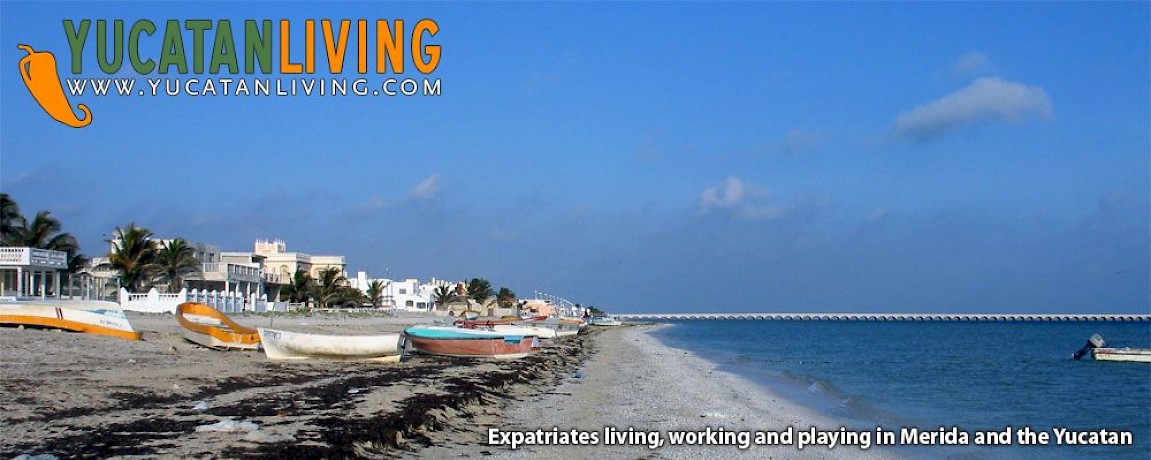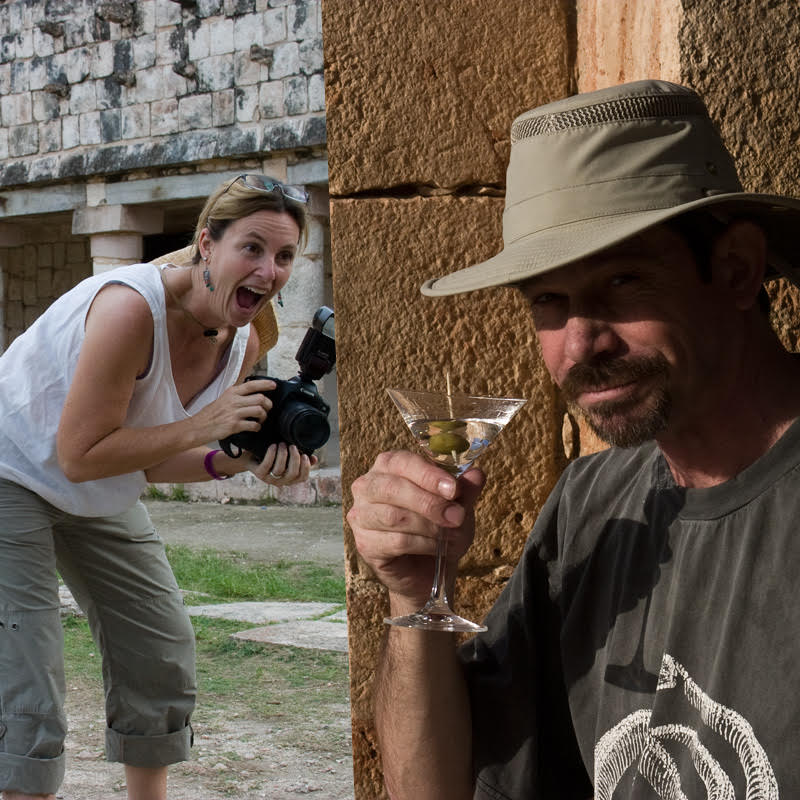Más sobre la Ley Decreto 801 de Yucatán
Mitch Keenan fácilmente podría ser llamado el Padre de los Bienes Raíces Gringos en Yucatán, si inventáramos un título tan tonto, lo cual prometemos no hacer. Mitch fue el primer extranjero que vendió bienes raíces en Mérida a gran escala, y durante muchos años fue el único haciéndolo. Muchos han aprendido de Mitch o han recibido su ayuda, y ahora tienen sus propias agencias. Es muy respetado por todos. Su agencia, que primero se llamó Pirámides de Propiedades, ahora se llama Mexico International, y vende bienes raíces de costa a costa en la Península de Yucatán. Mitch recientemente envió esta actualización a Yucatan Living, dándonos su opinión sobre la reciente ley puesta en vigor respecto a la preservación de las playas a lo largo de la costa del Golfo de Yucatán:
El Decreto 801 es muy similar a los tipos de protecciones que se han implementado en Costa Maya y la Riviera Maya en Quintana Roo. En el Estado de Quintana Roo, las leyes y regulaciones diseñadas para proteger el medio ambiente y dictar qué tipo de mejoras se pueden construir, están cubiertas por los "POET" (Programas de Ordenamiento Ecológico Territorial).
El Decreto es más o menos el mismo tipo de documento. Parece un poco enredado y probablemente requerirá algunas pruebas/desafíos legales para ayudar a aclarar su intención y cómo será aplicado.
Es muy específico en cuanto a los permisos de densidad poblacional, huella de construcción, restricciones de altura, metros cuadrados de construcción permitidos, escurrimiento de agua, reemplazo o reubicación de flora y fauna, situación del sitio dentro del lote y permisos requeridos. Como mencionó Jennifer Lytle antes, la costa está dividida en muchas regiones y cada una tiene restricciones específicas.
La regla para construir estructuras a una distancia de 60 metros de la marea alta es para reducir la erosión de la playa.
Cuando el mar está agitado y la marea alta, la marea avanza tierra adentro, a veces hasta la laguna donde se absorbe. Cuando hay una estructura que impide el paso de la marea, ésta choca contra la estructura, enviando una columna de agua hacia arriba. Cuando el agua regresa a la playa, la consume y arrastra la arena de vuelta al mar. Personalmente, creo que una ley para proteger el medio ambiente y atender algunas de las causas de la erosión de playas ya era necesaria desde hace mucho para las costas de Yucatán.
Entiendo la preocupación que está causando este llamado a la protección. Sin embargo, la ley permitirá construcciones sobre pilotes, si la propiedad no tiene la profundidad suficiente para construir a 60 metros hacia atrás. Además, las casas actuales están protegidas por derechos adquiridos y no se verán afectadas.
La ley será evolutiva (no revolucionaria) en su aplicación y cumplimiento. SEMARNAT (Secretaría del Medio Ambiente y Recursos Naturales) tiene mucha experiencia en hacer cumplir este tipo de medidas protectoras. Sin embargo, los gobiernos locales que supervisan las áreas de playa en Yucatán tendrán que ponerse al día y eso llevará tiempo.
Si ya eres dueño de una casa en la playa y no planeas construcciones adicionales, no me preocuparía demasiado por el Decreto 801. Si tienes un lote en la playa en el que planeas construir, te SUGIERO FUERTEMENTE que consultes a un arquitecto/constructor y abogado que se hayan familiarizado con esta nueva ley y tengan experiencia en obtener permisos de SEMARNAT y otras autoridades locales.
Nosotros, los Gringos Trabajadores, queremos aplaudir a Mitch y a otros por su reacción y enfoque mesurado ante esto, y queremos recordarles a todos que este tipo de leyes son para el bien de toda la comunidad. Si no se preserva el medio ambiente, todas las casas construidas a lo largo de la playa no valdrán el terreno donde están edificadas. Todos necesitamos trabajar juntos para mantener hermoso a Yucatán.








Comments
Phil Mitchell 13 years ago
It is now March 2013. I would like to know if anything has been done about the 40 meters of lost beachfront in front of properties between Chelem and Churburna mentioned by "Richard Davies" on September 9th, 2010:
Reply
Sergio 14 years ago
The decree 801 was published in July 2007. In this document, called POETCY, the Yucatan coast is divided in zones called UGAS. Its very important to know the UGA of your land (o if you want to buy one) and before to build you must get your EIS (Environmental Impact Assessment) authorized by SEMARNAT.
Reply
richard 14 years ago
Thanks to all of you for your comments. It is very rewarding to know there is people in the planet who appreciates such areas as Yucatan. I have been interested in all the cultural aspects of the Mayan people as well as animals and plant life from this great peninsula from California for a few months now, and been reading a lot. Some day I will travel there to see and appreciate it even more.
Reply
Richard Davies 15 years ago
This site has been of great help and insight. I have a property between Chelem and Churburna and in the last 10 years have seen the beach in front of my house come closer and closer. I had the chance to speak to an engineer in Yucatan that had performed a survey on the effects of the lengthened pier and he totally agreed that the west side coastline of the pier (Chelem/Churburna) will pay the price by losing their beaches.
We (myself and the neighbours) are feeling the effects of this for the last 3 years. After hurricane Wilma hit the foundations of the beach-front areas were left totally exposed and up to 4 meters under the concrete structure could be seen. The beach is gradually getting closer and closer with every visit I make there. Once a beautiful 50-60 meter beach has now been brought down to 20 meters.
There must be a way that the owners and local government can collaborate to find a solution to this.
Richard, 20 years in Merida, Yucatan
Reply
Working Gringos 15 years ago
Actually, looking at the first comment on an article is an excellent way to figure out the date of that article. We have very few articles that go without comments...
Reply
Trevor 15 years ago
I think the information supplied is very valuable. My only suggestion regarding all articles published is that they should have been dated.
Looking through the responses, I have no idea if this latest article was before or after some of the comments. After all the comments go back over a period of 3 years!
Reply
Michael A 15 years ago
If you notice the severity of erosion began increasing shortly after the government built that 5 mile long dock in Progreso. To believe that it has no effect on the shoreline for 50 miles in each direction is naive. It causes a massive disruption of the natural flowing current of the Gulf. It has effected fishing as well as increased erosion. As water flowing from the east is deflected out to sea after hitting the Progreso dock, it pulls a back current from Chelem and Chuburna, taking sand with it. It takes sand and seeds with it spreading the flora into deeper water allowing more plants to grow and displacing fish. The land owners should start a class action suit against the government and have them pay for effective relief for the problem they created.
Building a house 60 meters or 100 meters will make no difference; the shore will erode. Coastal dredging is needed. Sand is sucked off the bottom 15 meters out from shore on one side of the barge, and shot out 2-5 meters onshore from the other side of the barge. 100 cubic meters per minute of sand can be extracted from the sea bed and sprayed onto the beach. It will replace the lost sand. In six months you can replace 10 years worth of erosion. There are solutions.
Reply
Brenda Thornton 17 years ago
I am happy to see that the Mexican government is doing more to protect their beaches, wildlife, and environment. All the construction on barrer islands, beaches and shorelines in the United States is all about greed.
We live about 70 miles north of Galveston and had storm damage from Ike on our property, including our roof, and it just points out that our Indian and indigenous forebearers had a good deal more sense than we do today. I love Galveston and the damage broke everyone's heart, but I think it is time that damage along the coast lines is left to return to its' natural condition along much of it. Besides, with the rising of tides due to the warming, many of these places will be permanently underwater by the end of this century.
Reply
CasiYucateco 17 years ago
That's electricity in Mexico. The first to bring in electric lines pays the cost of the wires and the poles and all the other neighbors benefit. It is a common occurrence.
We once extended lines about 2 kilometers at a very high cost. Soon, every lot along the way had connected to those high tension lines (not the transformer) for free. (That is completely legal by the way. The CFE controls high tension lines, even if you build them yourself.)
Did your builder/contractor/architect/attorney advise you about these things? They should.
There are limits. Too big a load from too many houses and your expensive transformer will pop. (as in BOOM!) You really need to visit with a local attorney who specializes in such things advise you.
The best solution is for the other lots to extend the high tension lines to their property and install their own transformers. That often does not happen. The rating of your transformer will determine how many households can connect without straining it.
Reply
JEFF 17 years ago
Thank you, Casi Yucateco. That's what I wanted to hear. I have a transformer that I bought and everyone is trying to connect to it. They just don't want to spend the money I did... I guess. They are coming from four to six lots away underground and up the pole to connect. Not fair!!
Reply
CasiYucateco 17 years ago
"How far....?" Well, it depends on the voltage, amperage, cable size, purpose, location, etc. Obviously, electricity is distributed over the face of the earth, so that's not the problem. But, what seems like s simple question is actually complex.
A competent electrician can answer such things with the specifics at hand. Generally speaking, a line for 110 to 220 can be run a few hundred feet, but the cables have to be properly sized. grounded and installed.
Reply
(0 to 11 comments)Next »